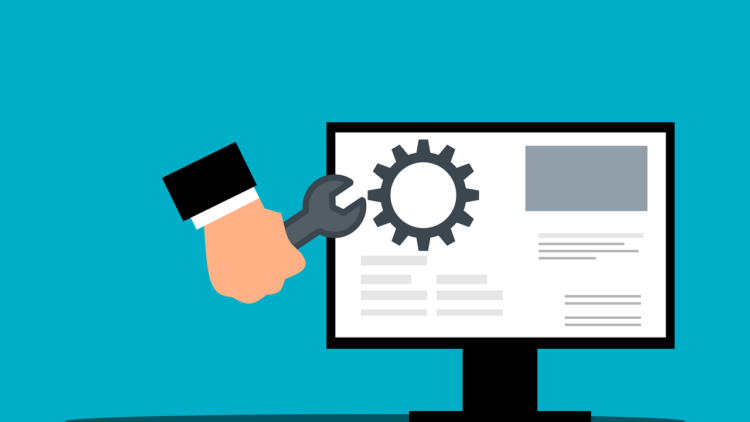
Did you know that businesses can lose up to 10% of their revenue due to inefficient procurement processes? Therefore, staying efficient and cost-effective is more important than ever. More and more organizations are using technology to simplify their operations, and one critical area benefiting from digital transformation is procurement. Purchasing solutions, also known as procurement software, help businesses simplify and optimize their purchasing processes. But what exactly is a purchasing solution, and how can it help your organization? This beginner’s guide provides an in-depth introduction to purchasing solutions and their transformative benefits.
What is a Purchasing Solution?
A purchasing solution is a software platform designed to automate and manage the procurement process. It helps organizations acquire goods and services efficiently. It also ensures compliance, cost control, and strategic sourcing. From requisition creation and vendor selection to order processing and payment tracking, purchasing solutions offer the best solution to procurement management.
By integrating purchasing solutions into their workflows, businesses can eliminate manual processes, reduce errors, and gain greater visibility into their procurement activities. These solutions are particularly valuable for organizations managing a high volume of transactions or working with multiple suppliers. For instance, a retail chain operating across hundreds of locations can centralize procurement through a purchasing solution, ensuring uniformity in pricing and quality.
Key Features of Purchasing Solutions
Modern purchasing solutions offer a wide range of features to simplify and enhance procurement processes. Each of these features plays a crucial role in addressing the common challenges businesses face in procurement.
One of the most impactful features is automated requisitioning and approvals. Employees can submit purchase requests digitally, which are then routed through pre-configured approval workflows. This process eliminates the bottlenecks caused by manual reviews and ensures all purchases comply with organizational policies. Imagine an office manager needing new supplies—an automated system ensures their request is reviewed promptly and approved based on pre-set budgets and vendor preferences.
Another essential feature is vendor management. Purchasing solutions provide centralized databases to store and track supplier information, performance, and compliance. This fosters long-term, reliable partnerships by enabling businesses to onboard and evaluate vendors effectively. For example, a construction company can use vendor management tools to ensure that only certified suppliers provide materials, mitigating risks and delays.
Purchase order (PO) management is another game-changer. Automation simplifies the creation, tracking, and distribution of POs, providing real-time updates on order statuses. This transparency minimizes delays and errors, ensuring timely deliveries. For example, a manufacturing firm can use PO management tools to track raw material orders, avoiding production downtime due to supply chain disruptions.
Detailed spend analysis capabilities allow businesses to identify cost-saving opportunities and optimize budgets. By analyzing spending patterns, companies can negotiate better deals with suppliers and eliminate inefficiencies. For instance, a healthcare provider might discover redundant vendor contracts through spend analysis, consolidating them to save on operational costs.
Other features like contract management, invoice processing and payment integration, and seamless system integration ensure that every step of the procurement process is efficient, transparent, and aligned with business goals. For example, contract management tools automatically alert stakeholders about upcoming contract renewals, avoiding lapses in critical agreements.
The Transformative Benefits of Purchasing Solutions
Adopting a purchasing solution transforms procurement processes, delivering tangible benefits across efficiency, cost savings, visibility, supplier relationships, and compliance.
Increased efficiency is among the most immediate advantages. Automation significantly reduces the time spent on manual tasks like data entry and document handling. Employees can redirect their focus to strategic activities, such as supplier relationship management or long-term planning. For instance, a logistics company using a purchasing solution can automate invoice reconciliation, allowing staff to concentrate on optimizing delivery routes.
Cost savings are another key benefit. Purchasing solutions provide detailed insights into spending, enabling organizations to identify waste, negotiate better supplier terms, and enforce compliance with budgets. Consider a mid-sized business that discovers duplicate invoices using its purchasing platform—resolving these issues can save thousands annually.
Enhanced visibility into procurement activities helps decision-makers gain real-time insights into orders, invoices, and payments. Centralized data enables swift responses to challenges and more informed decision-making. For example, a procurement manager trying to address delayed shipments can quickly access order histories and vendor details, identifying and resolving issues promptly.
Building stronger supplier relationships is another benefit of purchasing solutions. Efficient vendor management and timely payments foster trust and collaboration. Suppliers are more likely to prioritize organizations that respect agreed timelines, creating mutually beneficial partnerships. Performance tracking tools also highlight top-performing suppliers, helping businesses strengthen those connections.
Compliance and risk management are significantly improved with purchasing solutions. Built-in checks ensure adherence to company policies and external regulations. Alerts for potential risks, such as contract breaches or delivery delays, allow businesses to take proactive measures. For instance, a pharmaceutical company can use compliance tools to ensure its suppliers meet stringent safety and ethical standards.
Streamlining the Procurement Process: A Real-World Example
Let’s explore how a purchasing solution can transform procurement in practice:
An employee at a mid-sized firm logs into the purchasing platform to request new IT equipment. The system routes the request to the department manager, who reviews and approves it digitally. The platform then generates a purchase order, suggesting pre-approved vendors based on price and delivery timelines. Once the order is placed, stakeholders receive real-time updates on its status. Upon delivery, the platform matches the invoice to the purchase order and approves it for payment, seamlessly integrating with the accounts payable system. This process eliminates delays, reduces errors, and ensures a smooth, transparent workflow.
Case-study
One compelling real-life story of a company overcoming procurement challenges is that of Johnson & Johnson. The multinational pharmaceutical and consumer goods company faced significant hurdles due to its extensive product portfolio and complex supply chain. To address these challenges, Johnson & Johnson implemented a comprehensive procurement transformation strategy aimed at optimizing processes for cost savings and efficiency.
Key Strategies Implemented
This company simplified its procurement function through a multi-pronged approach. They consolidated suppliers and enhanced contract management, leading to improved negotiation outcomes and substantial cost reductions. Additionally, they invested in innovative technologies like data analytics and automation tools, providing greater visibility across the supply chain and enabling the identification and elimination of inefficiencies. Finally, the establishment of a centralized procurement function standardized processes globally, leveraging economies of scale while ensuring consistent purchasing practices across different regions.
Results Achieved
Through these strategic initiatives, Johnson & Johnson not only streamlined its procurement processes but also realized substantial cost savings. The transformation allowed them to operate more efficiently, ultimately enhancing their competitive position in the market.This case exemplifies how a well-structured purchasing solution can effectively address complex procurement challenges, leading to significant operational improvements and cost efficiencies.
Types of Purchasing Solutions
Organizations have different needs, and purchasing solutions come in various forms to address these requirements.
Cloud-based solutions are particularly popular due to their accessibility and scalability. These platforms are ideal for growing businesses that need flexible, low-maintenance tools. For example, a tech startup with remote teams can use a cloud-based purchasing solution to coordinate procurement seamlessly across locations.
On-premise solutions provide greater control over data, making them suitable for organizations with stringent security requirements. However, they often involve higher upfront costs and ongoing maintenance. Large enterprises in industries like finance or defense frequently opt for on-premise systems to ensure data integrity.
Integrated procurement suites offer comprehensive functionality, combining purchasing, inventory, and supplier management features. These are ideal for large organizations with complex procurement needs. A global retailer, for instance, can use such a suite to oversee its supply chain operations across multiple regions.
Standalone solutions, which focus on specific aspects like spend analysis or PO management, are better suited for smaller businesses or companies addressing targeted challenges. For example, a nonprofit organization might use a standalone tool to manage grant-related spending efficiently.
Who Can Benefit from Purchasing Solutions?
Organizations of all sizes and industries can reap significant benefits from purchasing solutions. Small businesses can simplify procurement processes without increasing headcount, mid-sized companies can gain control over spending and supplier relationships, and large enterprises can manage complex, global procurement needs efficiently.
For example, a small marketing agency can automate vendor payments, freeing its team to focus on creative projects. A mid-sized manufacturing company can use spend analysis tools to negotiate better contracts with suppliers. Meanwhile, a multinational corporation can leverage integrated procurement suites to harmonize operations across multiple regions, ensuring consistency and compliance.
Conclusion
Purchasing solutions are indispensable tools for modern organizations seeking to optimize their procurement processes. By automating repetitive tasks, enhancing visibility, and improving compliance, these platforms deliver measurable improvements in efficiency and cost-effectiveness. Whether you’re a small business looking to streamline operations or a large enterprise managing a global supply chain, investing in a purchasing solution is a strategic step toward smarter, more agile procurement.
Ready to transform your procurement process? Discover how Gainfront’s innovative purchasing solutions can empower your organization to thrive in a competitive marketplace.
Rahul Asthana has a PhD in Operations Management from the Anderson School at UCLA. He has 25 years of experience in supply chain management, starting his career in IBM working in supply chain operations. He then moved into product management and product marketing of supply chain software while at SAP and Oracle. He manages product strategy and product management at Gainfront. In terms of hobbies outside of work, he really enjoys tennis. Follow Rahul Asthana on Linkedin!
